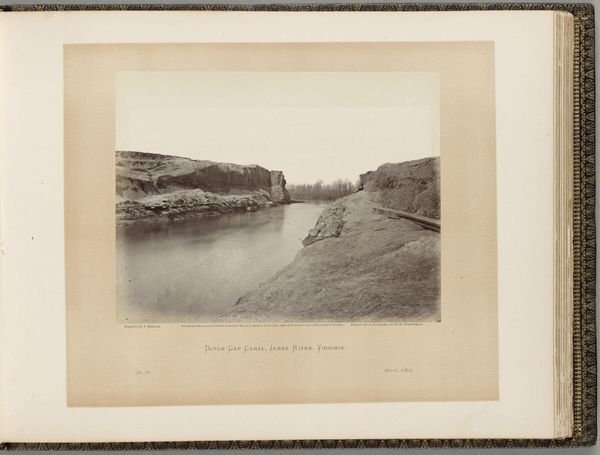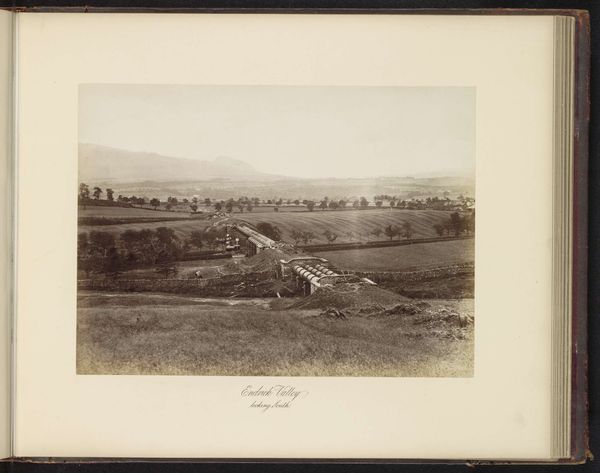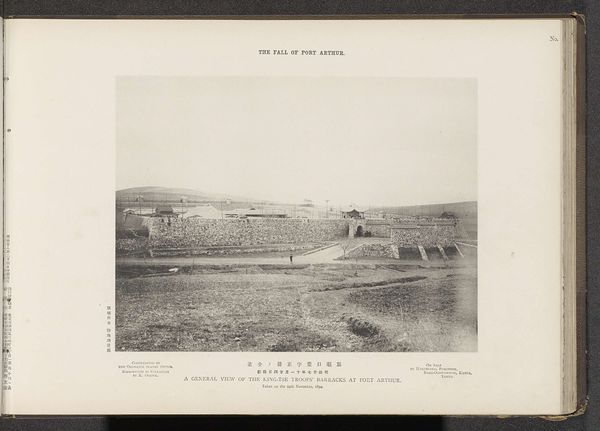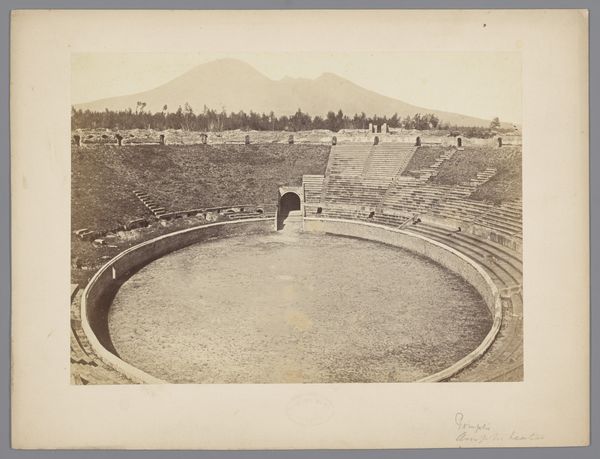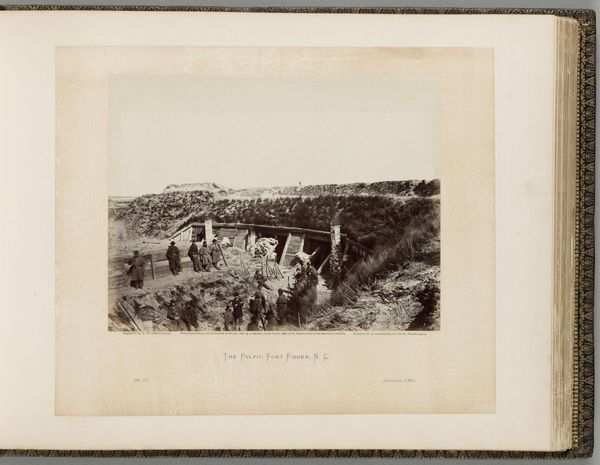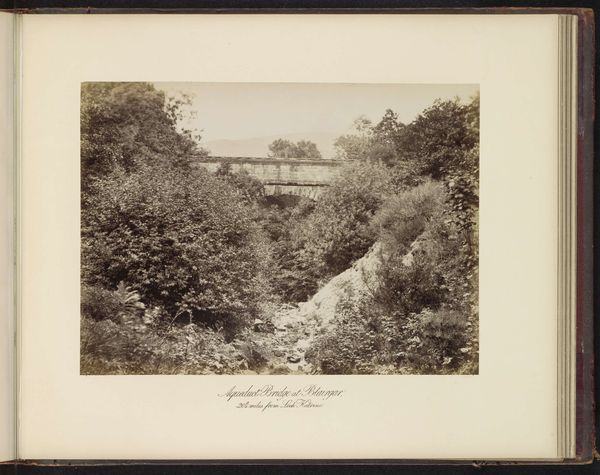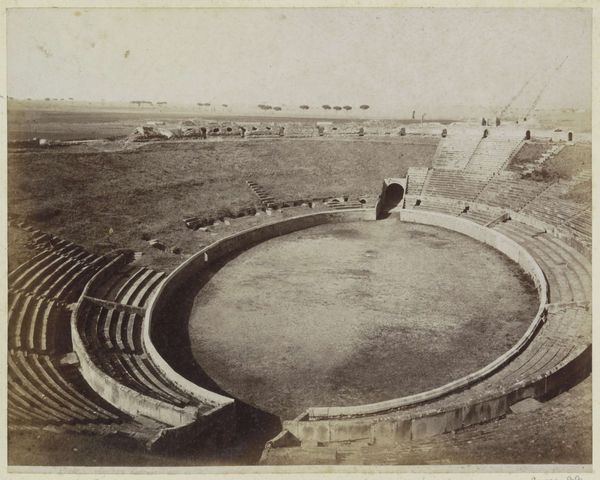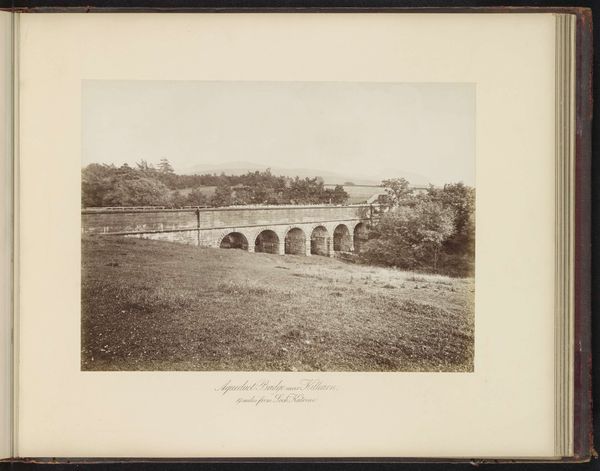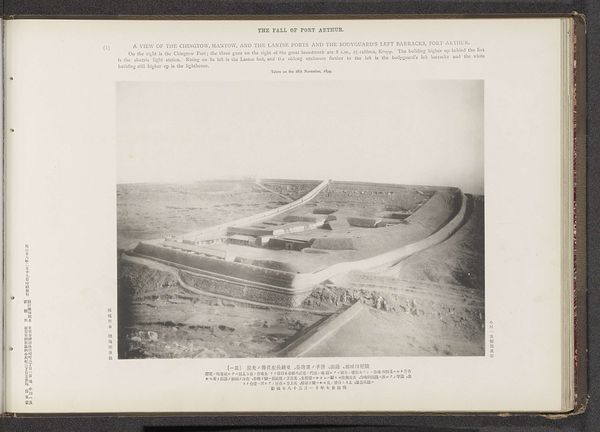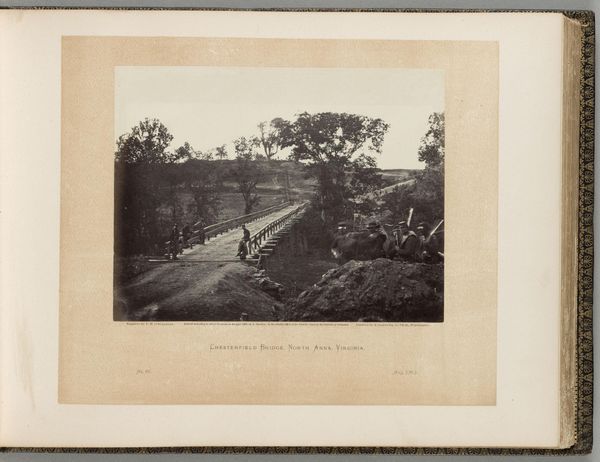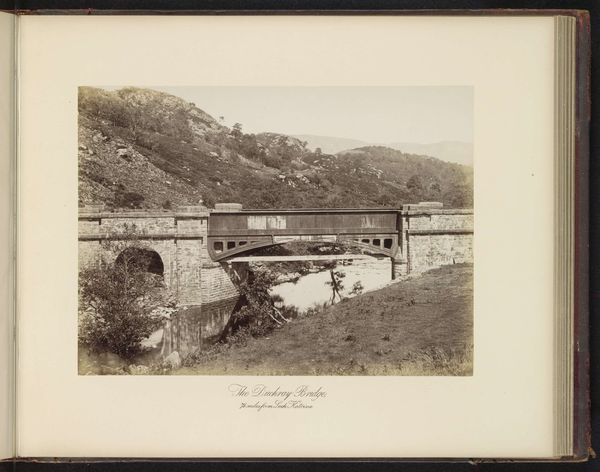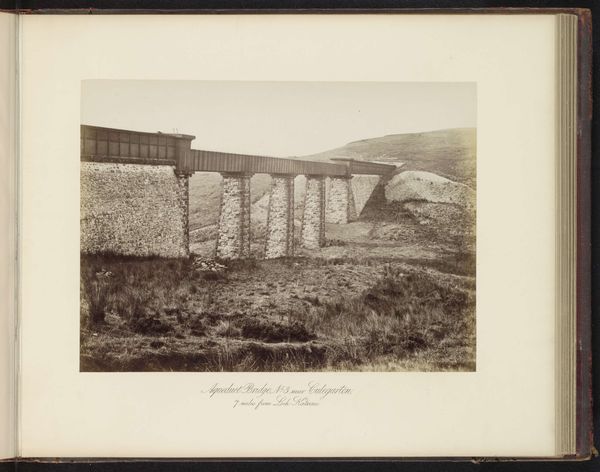
Gauge basin, at termination of aqueduct, Mugdock reservoir, 25 1/2 miles from Loch Katrine, 9 miles from Glasgow Bridge before 1889
0:00
0:00
photography, albumen-print
#
pictorialism
#
landscape
#
photography
#
albumen-print
#
realism
Dimensions: height 204 mm, width 279 mm
Copyright: Rijks Museum: Open Domain
Curator: Welcome. We’re looking at "Gauge basin, at termination of aqueduct, Mugdock reservoir, 25 1/2 miles from Loch Katrine, 9 miles from Glasgow Bridge," an albumen print, sometime before 1889, by T. & R. Annan & Sons. Editor: My first impression is one of unexpected calm. Despite the industrial subject, the tonal range and careful composition render a tranquil, almost picturesque scene. Curator: Indeed. Observe how the circular structure of the gauge basin intersects with the rectilinear form of the aqueduct. This creates a dialogue between geometric precision and natural form, quite common in landscape photography of the period. Editor: I am particularly drawn to the sociopolitical implications here. This photograph documents a critical feat of engineering: the Mugdock Reservoir and the Loch Katrine aqueduct brought clean water to Glasgow, transforming the city's public health. It marks the transition of Victorian society into modernity. Curator: Precisely. The subtle gradations within the albumen print highlight texture – stone, water, grass – each element contributing to a balanced formal composition. Notice the soft focus, too. Pictorialism lends an artistic touch to a rather pragmatic scene. Editor: However, it is also crucial to examine who benefitted, and who potentially suffered during such large-scale infrastructural developments. Were there displaced communities? What were the ecological impacts of diverting water sources? These perspectives give further context to the image's cultural and ethical implications. Curator: Good points. Let's acknowledge how the light and shadow play to lead the eye, from the foreground basin into the landscape. A classic strategy in landscape photography that emphasizes depth. Editor: Absolutely, but I want to reiterate that understanding these elements also calls upon an intersectional framework; social responsibility alongside aesthetic appreciation can show us multiple points of view when assessing images of this period. Curator: An important consideration as we study such documentary images. Editor: Thinking about this picture prompts complex discussions, I wonder how those conversations affect how we perceive Victorian progress today.
Comments
No comments
Be the first to comment and join the conversation on the ultimate creative platform.
